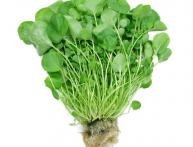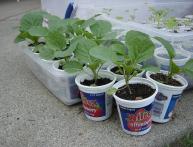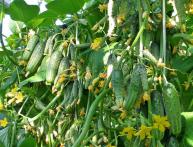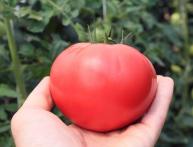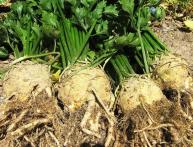How to grow spinach at home?

Spinach contains a huge amount of useful microelements and vitamins. With its help you can improve your health and cure some diseases. Therefore, many gardeners want to grow this plant on their plot. But to grow a rich crop of spinach, you need to know how to plant this plant and how to care for it after planting.
Content
- Characteristics of the plant and variety
- Soil preparation
- Planting seeds
- How to care for spinach
- Diseases and pests
- Harvesting
Plant characteristics
Spinach is an annual, early-ripening plant of the goosefoot family. Its homeland is the Middle East. Male plants are of little use for nutrition. When thinning the beds, they need to be pulled out. The plant tolerates frost well, it can withstand temperatures down to -8 degrees. The best temperature for plant development is 18 - 20 degrees.
Spinach contains vitamins and beneficial microelements. It can be used to treat problems associated with digestion, anemia, diabetes, and hypertension.
There are many varieties of spinach. They all differ in leaf shape, ripening speed, and yield. Taking into account the characteristics of a particular type spinach, you can choose the variety most suitable for cultivation.
The most popular varieties are:
- Strawberry spinach is the most beloved and popular variety among gardeners; it ripens very early, and the first harvest can be harvested in the spring.The strawberry variety differs from all other varieties in that it ripens small berries that look very similar to strawberries;
- Gigantic spinach. The plant belongs to the group of early ripening varieties; it has large, slightly bubbly leaves.
- Victoria. A late-ripening variety of spinach with round, blistered leaves.
- Virofle has large, ovoid leaves.
- Matador. One of the best early varieties. Having planted the plant in May, the harvest can already be harvested in July. Up to 9 kg per season is removed from one square meter.
Less popular varieties include Space, Melodiya, Sporter, New Zealand, Dolphin.
Soil preparation
When preparing to plant spinach, keep in mind that this plant does not grow well in acidic soils. The best option would be loamy soil. If the soil is acidic, ash or lime is added to it. For the beds, choose a sunny, well-lit place.
The beds are formed not very high, with sides made at the edges so that the water does not drain and the moisture is retained as long as possible. It is not recommended to plant spinach next to beets. Better to prepare the ground for landings since autumn. To do this, phosphorus-potassium preparations and compost are added to the soil. Per square meter you will need 6 kg of fertilizer.
After fertilizing, the soil needs to be dug well. In spring, the soil is fed with urea. In order not to spoil the taste, it is not recommended to fertilize with manure in the spring. Nitrogen fertilizers should not be used, since the leaves of this plant tend to accumulate nitrates.
Planting seeds
Early varieties are planted in late April or early May, depending on the region.
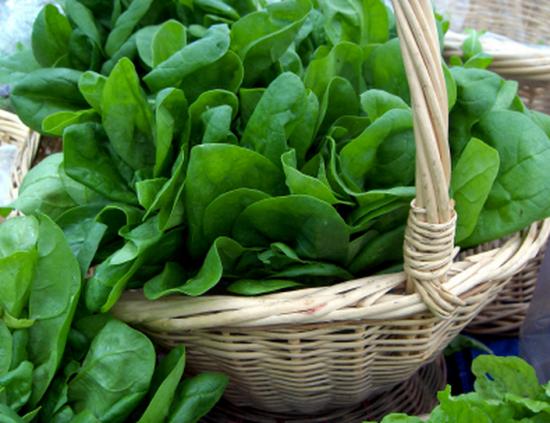
Before you start planting, you need to prepare the seeds. The procedure for preparing planting material is carried out according to the following plan:
- The seeds are placed in warm water for two days, the water is changed periodically.
- The next step is drying the seeds.
- In pre-prepared beds, grooves are made at a distance of 20 cm from each other.
- The distance between the seeds is 5 cm, the depth is cm.
- The grooves are covered with earth on top and compacted.
- Water the beds, you can cover them with burlap for a couple of days.
The first shoots should appear in two weeks.
How to care for spinach
Spinach loves moisture very much, so it should be washed frequently. water. Four waterings are required per week. One square meter will require 10 liters of water. If the soil preparation was carried out according to all the rules, then the plant will not require any additional fertilizing.
When thinning, make sure that the bushes do not touch each other. Throughout the entire season, the soil must be loosened and weeds pulled out. If the spinach starts to sprout, you will need to break off the tops.
Spinach is an unpretentious plant; all you need to do is water it, loosen the soil and pull out the weeds.
Diseases and pests
Spinach is susceptible to fungal diseases. It can be bothered by root rot, when the root begins to turn black, and downy mildew, which causes yellow spots to appear on the leaves. To save the plant from downy mildew, the leaves should be smeared with ground sulfur and treated with mullein infusion.
Video about how to properly plant spinach:
A leafminer fly infests spinach and lays eggs on its leaves in early June. Eggs can be found on the reverse side of the leaf. Affected leaves should be removed periodically.
If there are aphids on the area, you will need to spray it with a solution of laundry soap, at the rate of 300 grams of soap per 10 liters of water.The leaves should not be treated with pesticides as this plant is eaten.
Harvesting
Spinach must be collected from the beds in a timely manner, otherwise it will lose its taste. Its leaves will become dense, rough and tasteless. When 5 or 6 leaves have formed on the bush, the plant is cut off under the first leaf. You can pull out the bush along with the roots.
Harvesting should be done in the morning, in dry, sunny weather. If it rained the day before, it is better to postpone the procedure. Cut leaves spinach is stored in a cool place. You can pack the plants in plastic bags and place them on the bottom shelf of the refrigerator.
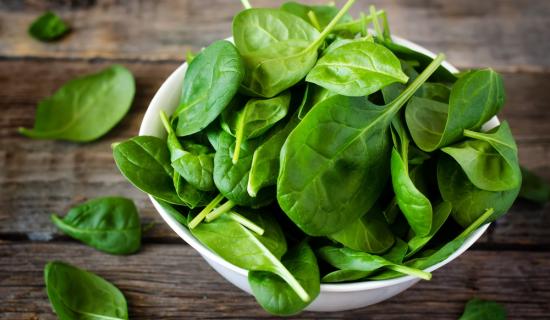
It will not be stored in this form for long, no more than two days. To preserve the crop for a longer period, it should be frozen or canned. Spinach in any form retains all its valuable substances. You can renew crops every three weeks, harvesting several crops in one season.




